Wastewater Management
Introduction to Wastewater Management
Wastewater Management Collecting, treating, and disposing of wastewater safely. To protect the environment and public health. Wastewater is treated to be reused as much as possible so that water can be saved, pollution reduced, and hygiene ensured.
Sources of Wastewater
Wastewater is used water from a variety of sources. It is accompanied by impurities such as chemicals, bacteria, and solid waste, making reuse impossible. Its primary sources of wastewater are:
-
Domestic Wastewater – Water generated from homes, inclusive of kitchen waste, laundry, bathing, and toilets. It is soap, grease, human waste and food particles.
-
Industrial Wastewater – This is the water which is used in factories and industries, and it is often contaminated with chemicals, heavy metals, and toxins.
-
Agricultural Wastewater – Water that flows off from fields, carrying pesticides, fertilizers, and animal waste.
-
Stormwater Runoff – Rainwater that picks up debris, oil, and chemicals as it flows over roads and buildings.
-
Sewage Wastewater –Water from public sanitation facilities holding organic waste, bacteria, and other pollutants.
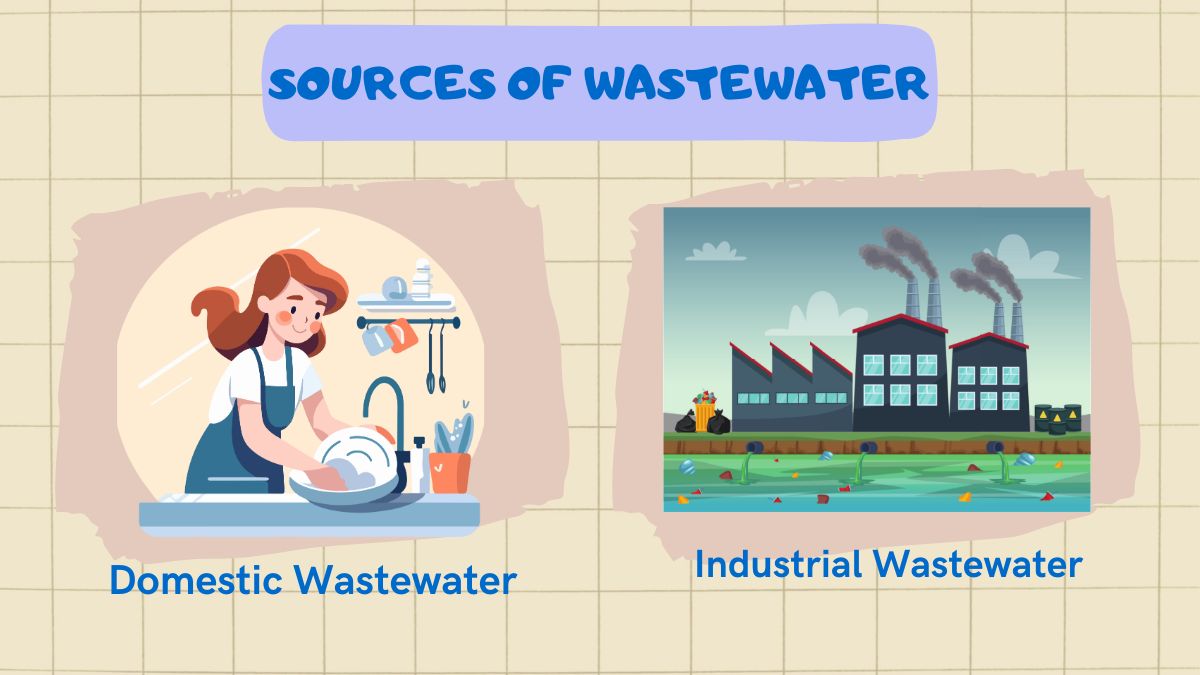
Indeed, proper Wastewater Management prevents water from these domestic uses from seeping into natural water bodies and tools like Silt Curtains, which keeps silt from contaminating the water, to ensure clean water bodies.
The Sewage System
The We Sewage Disposal System collects and transports sewage from homes, businesses, and the public (ex: mong cholera) to the treatment plants. It consists of:
1. Components of a Sewage System
-
Drains and Pipes – Underground pipes that transport the sewage and waste from residence and industries to the main sewer line
-
Manholes – Openings in the sewer system for maintenance and inspection.
-
Sewers – Larger pipes which carry sewage to waste[1]water treatment plant (WWTP).
-
Pumping Stations – Used in low-lying areas to propel waste sewage toward the treatment plant.
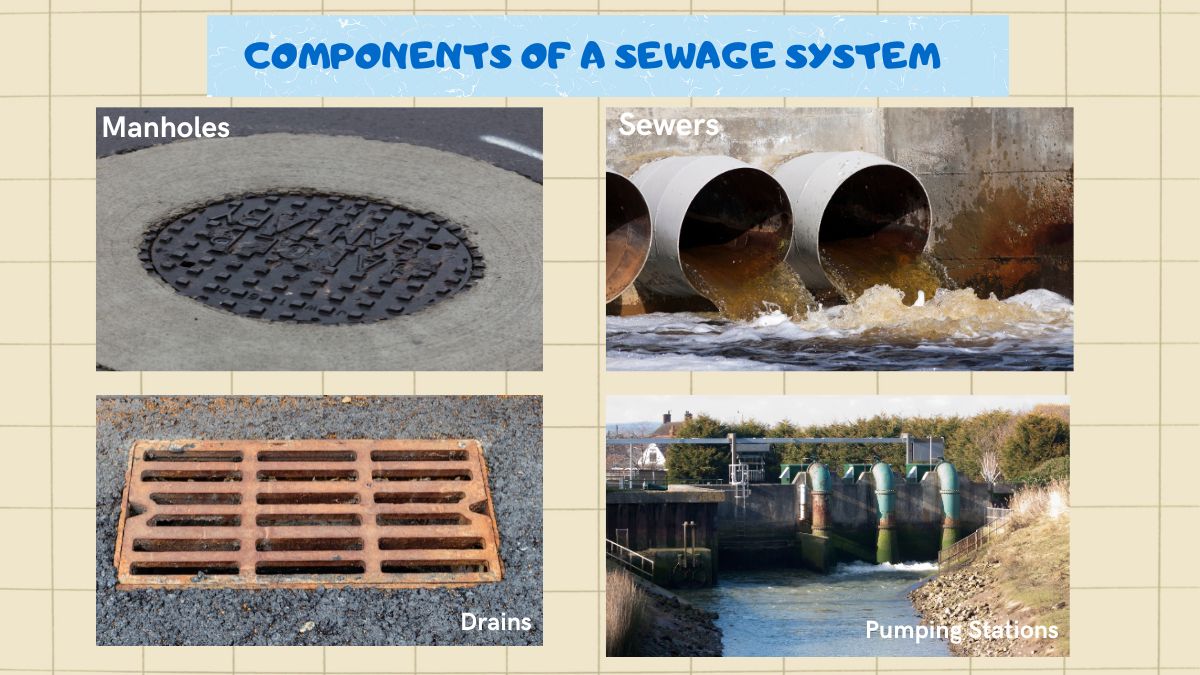
2. Problems in the Sewage System
-
Blockages due to solid waste or grease buildup.
-
Leakages leading to groundwater contamination.
-
Overflowing sewers during heavy rains or due to improper maintenance.
Healthcare and environmental security requires a proper maintenance of Sewage Disposal System.
3. Sewage and its constituents
Sewage is the liquid waste produced by homes, industries, and businesses, mainly water containing chemicals and suspended solids. These contaminants can be categorized into the following categories:
-
Organic impurities, such as human poop, animal waste, oils, urea (from urine), herbicides, pesticides and waste from fruits and vegetables.
-
Inorganic impurities, such as nitrates, phosphates, and metals.
-
Minerals, including phosphorus, nitrogen, and potassium.
Wastewater Treatment Plant (WWTP)
Septic tank/ Sewage treatment plant (STP) — where the wastewater is treated before being discharged into the environment or used again. At the wastewater treatment plant, the process generally has several stages:
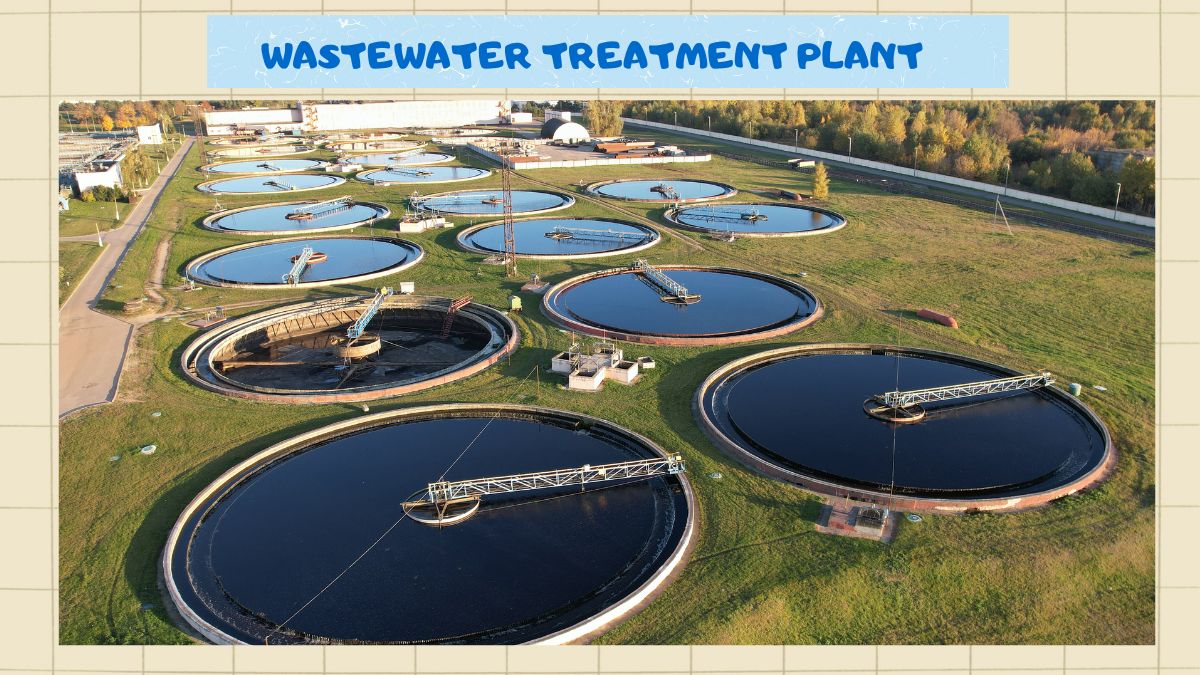
1. Primary Treatment
-
Screens are used for separating large matters such as plastic, wood and cloth.
-
The water is forced to sedimentation tanks where heavier particles descend.
2. Secondary Treatment
-
Biological treatment Uses bacteria and microorganisms to digest organic matter.
-
Aeration tanks pump oxygen into the system to promote bacterial activity.
3. Tertiary Treatment
-
Chemical treatment to free remaining impurities
-
Chlorination or Ultraviolet disinfection to kill bacteria.
-
Water is subsequently released into rivers or reused in agriculture and industries.
Wastewater Treatment Plants (WWTP) help to reduce waste and save water from pollution.
Alternate Methods of Sewage Disposal
Where properly maintained Sewage Disposal Systems are unavailable, alternative methods provide a dependable backbone for disposal:
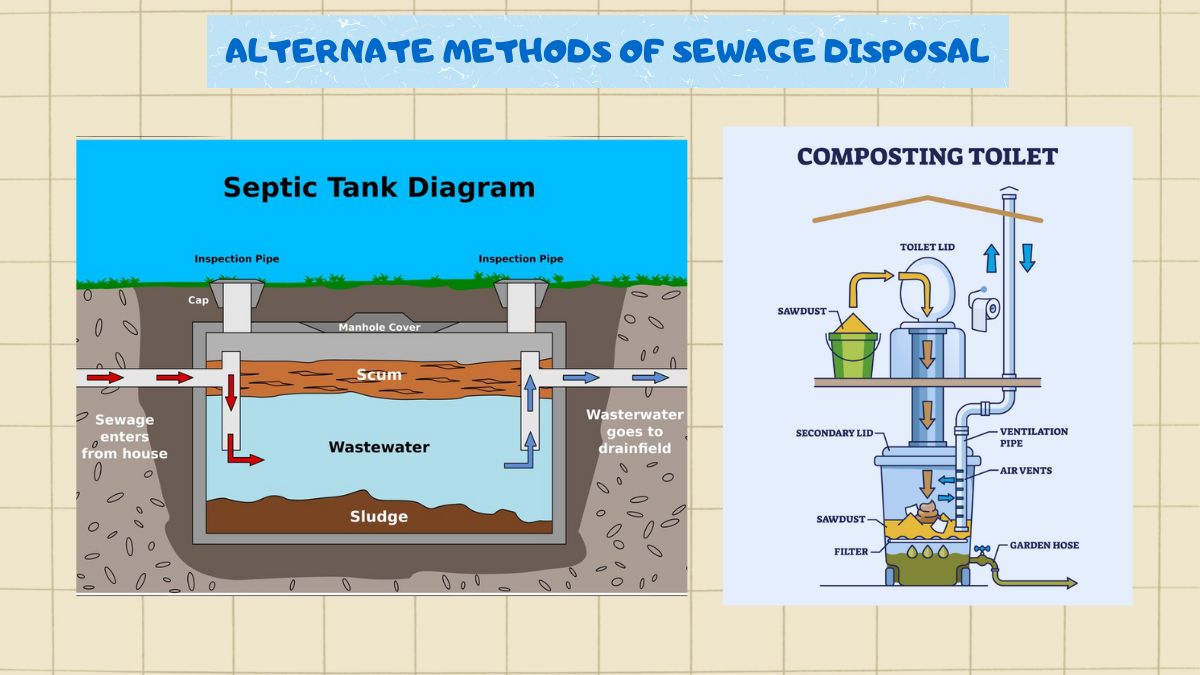
1. Septic Tanks
-
Used in the areas sewer pipes are not accessible.
-
Meanwhile, the solid from the liquid waste and home-by home-composting.
2. Composting Toilets
-
Bringing human waste to compost through the use of bacteria and microorganisms
-
Reduces water consumption, serves as a source of organic fertilizer
3. Reed Bed Treatment
-
So treating wastewater with bacteria and plants, the natural way.
-
Save the environment and save money
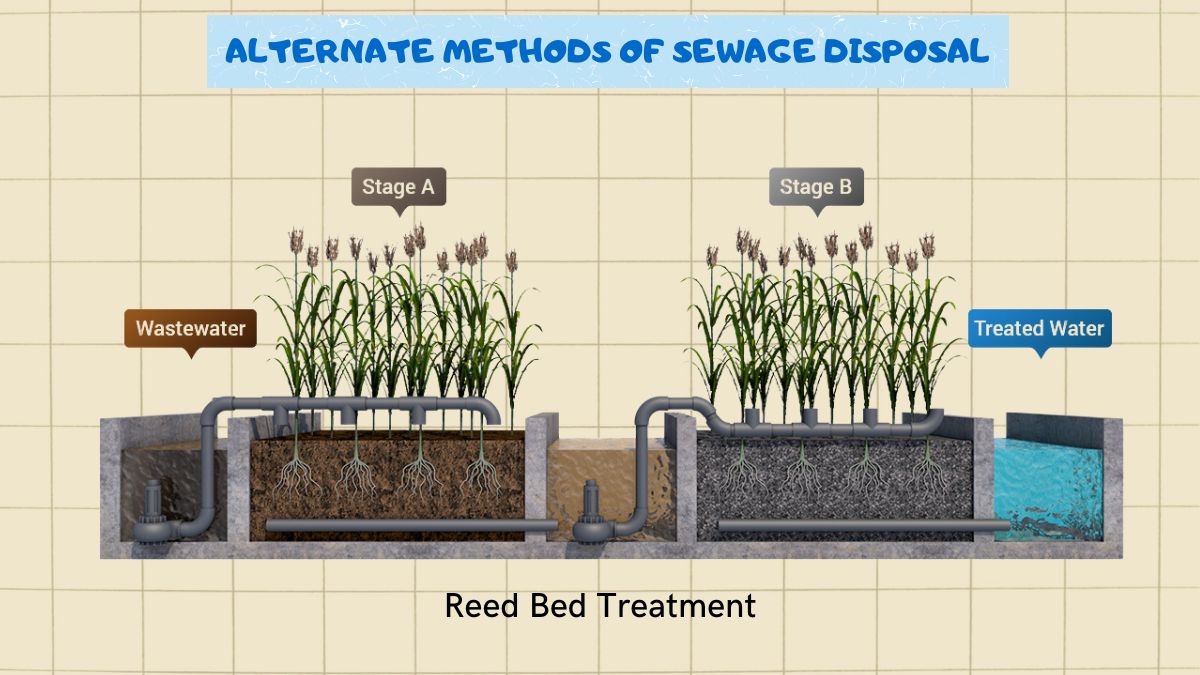
This is helping the Wastewater management in remote areas and reducing the environmental pollution.
Importance of Sanitation
Sanitation is the proper disposal of waste to prevent disease and contamination. Good sanitation is vital for:
1. Preventing Diseases
-
Harmful diseases including cholera, diarrhea and dysentery spread due to lack of sanitation.
-
Here, the rate of infections is reduced by safe drinking water and sanitation.
2. Environmental Protection
-
Sewage disposal is also essential to prevent contamination of rivers and lakes.
-
Also help reduce soil pollution and protect biodiversity
3. Water Conservation
-
Treated water can be safely reused by wastewater Management.
-
Minimizes the need of freshwater sources.
4. Economic Benefits
-
Avoided production costs for medical treatment for sanitation-related diseases
-
Promotes tourism and enhances quality of life.
Safe sanitation is a question of health, environmental, and sustainable living.
Fun Facts about Wastewater Management
-
Did you know? An individual consumes about 140 liters of water daily, however, 90% of this water ends up as waste!
-
Fact: The first modern sewage system was built in London in the 19th century to curtail cholera.
-
Surprising! Some Wastewater Treatment Plants generate electricity through the conversion of waste to biogas!
-
Amazing! That means treated wastewater can be cleaner than drinking water!
-
Did you know? Agricultural reuse decreases water demand by 30-40%2, and this is just one of many industries that could take advantage of the Taproot model.
Things You Have Learned !
- Wastewater originates from homes, industries, farms, and rain.
- Sewage systems consist of pipes, manholes, and treatment plants.
- WWTP employs 3 processes: physical, biological, and chemical treatment.
- Septic tanks and composting toilets are alternatives in rural areas.
- Sanitation stops diseases and keeps the environment clean.
- Treated water can be reused in farms and factories.
- Wastewater treatment can even produce electricity.
- Most of our daily water consumption becomes wastewater.
CBSE Schools In Popular Cities
- CBSE Schools in Bangalore
- CBSE Schools in Mumbai
- CBSE Schools in Pune
- CBSE Schools in Hyderabad
- CBSE Schools in Chennai
- CBSE Schools in Gurgaon
- CBSE Schools in Kolkata
- CBSE Schools in Indore
- CBSE Schools in Sonipat
- CBSE Schools in Delhi
- CBSE Schools in Rohtak
- CBSE Schools in Bhopal
- CBSE Schools in Aurangabad
- CBSE Schools in Jabalpur
- CBSE Schools in Jaipur
- CBSE Schools in Jodhpur
- CBSE Schools in Nagpur
- CBSE Schools in Ahmednagar
- CBSE School In Tumkur











